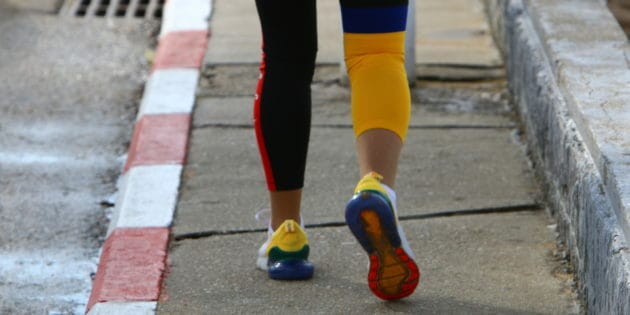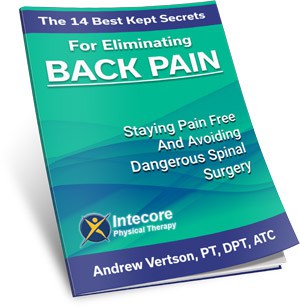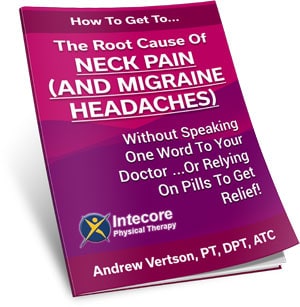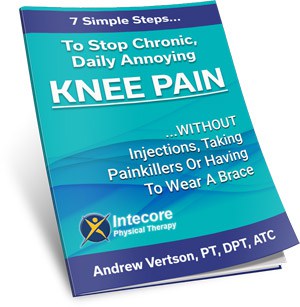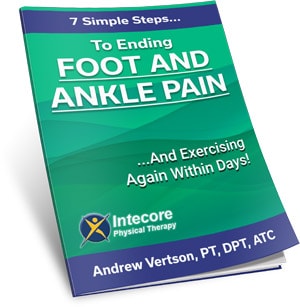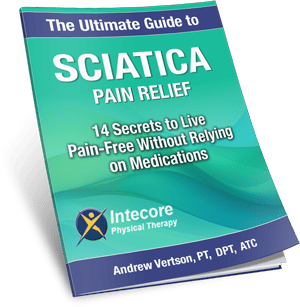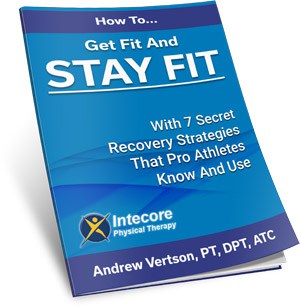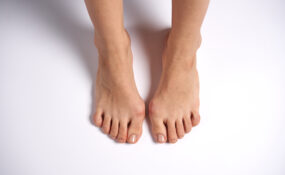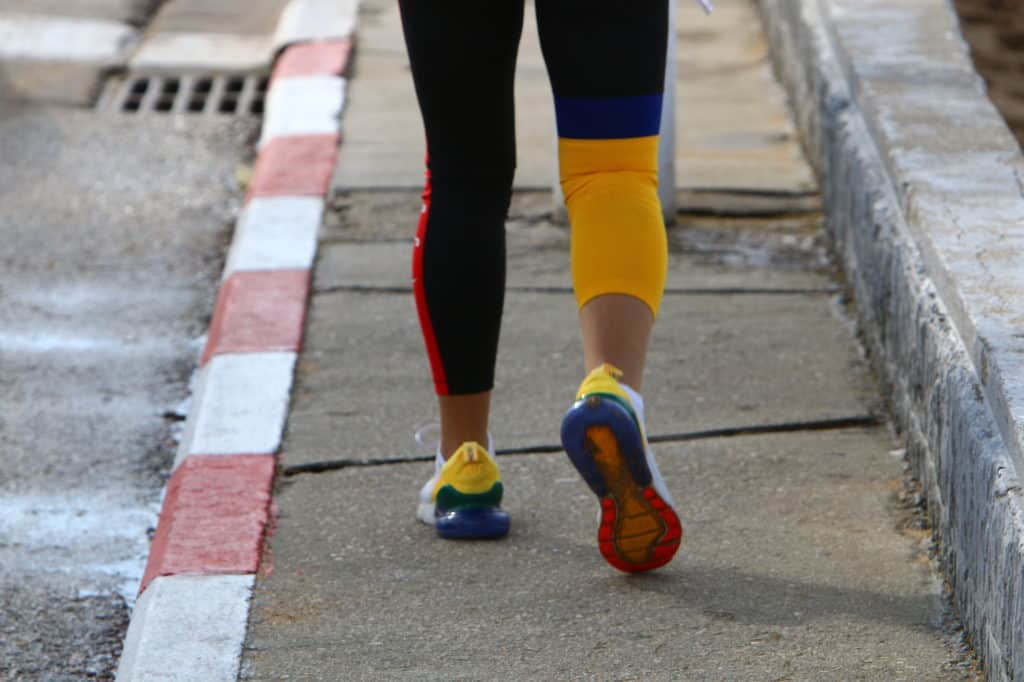
If you have suffered an injury and have been ordered to rest by your doctor, or simply cannot move about because of pain & discomfort, you may feel lost and unable to exercise. But don’t panic. There are things you can do.
If you love physical activity and sports, or cherish an active lifestyle, there’s nothing more frustrating than being unable to take part.
Besides missing out on the adrenaline rush, the camaraderie, and the sense of achievement, you will naturally feel concerned about your agility and fitness levels when laid up waiting for an injury to heal.
After all, your attitude dictates that you need to keep fit, and sitting around for undefined stretches of time can cause a domino effect on your stamina.
This is why recovering from an injury, or bout of chronic pain, can really take its toll on muscle mass, posture, and quality of life.
It’s therefore no shock to learn that recovering from an injury is challenging for multiple reasons. It’s not just about being independent, being able to drive, and engaging with family and friends over social events.
The thing about life is this: no one is immune from events that can sideline your physical activity. Everybody is susceptible to illness or injury. These things happen, even if you put everything in place to avoid accidents or illnesses.
Being put on an extended hiatus can feel like the end of the world. But it doesn’t have to be. There are things you can do to stay in shape while injured or sick, although you should never push yourself too hard when recovering – you’ve been told to rest for a reason!
However, if you really feel the need to do something about it, here are some top tips for staying healthy and partly active (without going too far).
More Blogs From Intecore
Is My Chest Pain Serious And What Help Can I Get?
How Physical Therapy Can Help Keep You On Track This Year
How Can I Relieve My Shoulder Pain?
Change Your Exercise Routine
We aren’t talking about the time you wake up or eat. Although, if you feel these needs should be addressed, then go for it!
Instead, by making some simple changes to your usual workout or exercise schedule, you should be able to keep and build your strength without worsening your injury.
For example, if you are recovering from a knee injury, don’t try to run over a large distance. Short and gentle runs or jogs are your best bet. Instead of attempting weighted squats, why not try out seated bodyweight exercises – such as elbow-to-knee twists, or front-leg stretch kicks?
When recovering from injuries on the lower half of your body, focus on the exercises you can undertake with your upper half. Modify your stretches and activities based around what you can manage pain-free.
If you can, try walking the short journeys where you would usually drive or use public transport. When taking a gym hiatus, switching out the subway or the bus will assist in keeping you active throughout your recovery.
By walking at a semi-moderated pace for 30 minutes, you can burn around 150 calories. You can also gently introduce lunges and lateral band walks as time goes on. If leg activity is totally out of the question, then weights might be the answer.
You’ll burn kilojoules, and maintain overall muscle tone and fitness levels.
Keep Up That Nutritious Diet!
To keep your energy levels up, you’ll want to avoid sugary treats and carb-heavy foods. And that’s really hard as your first reaction after surgery (or when just starting recovery) is to reach for those comfort foods.
While you will want to satisfy that craving, it’s best to avoid binging – for that high-calorie diet isn’t going to do you any favors without your usual physical activity!
You can talk to your doctor, or your physical therapist, about sensible calorie intake while recovering.
Don’t forget to eat plenty of protein-based foods. By incorporating the macronutrient, paired with zinc and vitamin C, your immune system will stay strong and aid in getting you back to health.
Switch out those crisps and sweets for healthier alternatives. Ice cream can be swapped out for yogurt with honey. Potato chips can be switched for vegetable crisps. It all adds up, and it’ll help you stay on track with your health.
Get Outdoors!
It’s always wise to grab fresh air when you can; especially when you are recovering from injury. If you are able to comfortably ride a bike, then why not go for a gentle bike ride?
Not able to ride? Head out for a walk or a jog, as processing lungfuls of oxygen remains one of the things that make you feel so much better. You’ll get this effect by doing any range of outdoor activities.
Getting outside will also help take your mind away from your injury, and even help with the stress of recovering from an accident. Sunlight helps with vitamin D, too.
Getting Back In Action
If you are gearing up to take on some physical exercise, bear the following factors in mind.
Don’t rush back into things. Depending on the injury, a good way to regain your stride and maintain strength is to tackle the stairs. The plyometric motion of stair walking helps to rehabilitate your body, while also maintaining the leg muscles.
If you can cope with that, lunges and squats can be incorporated into the stair walking to help maintain your balance, while also taxing your heart and lungs.
Should your injury have been serious, and you’ve not been active for more than a couple of months, we’d recommend that you start like a beginner. Get into the flow of intersperse slow running, mixed with walking, and carefully reduce those walking breaks.
If the injured area of your body begins to protest and hurt, then stop immediately. Do not push forward. Arnold Schwarzenegger may give off the mantra that you must ‘work through the pain’ but, in the real world, all you are doing is further damage.
Running downhill should also be avoided where possible, as this puts extra stress on your muscles when compared to flat or uphill surfaces. Also be extra careful when running with other people, as (chances are) they will be fitter than you and push you along at a pace unfitting for individuals in recovery.
Try to stick to soft surfaces when exercising and running, such as grassy fields and dirt tracks, as these surfaces are easier on your legs.
We’d recommend starting on a treadmill, as you can take control of your pace from the comfort of home. If your injury starts to hurt, you are also in a safe place to recuperate.
For any first stab at re-engaging with exercise, wear your strongest and most supportive training shoes. If your running gear is falling to pieces, you will benefit from new shoes. It may feel expensive, but it will prevent recurring injury, and also allow your body the support to get better quickly.
And don’t forget to stretch. Both before and after each batch of exercise.
Pace Yourself
Don’t look to other recovery stories to make a basic foundation for your own. Everyone recovers at different speeds.
While it will feel frustrating, you will eventually recover once your body has fully mended itself. And pushing yourself faster just because other individuals claim to have recuperated in a faster time frame is only going to cause problems.
Your recovery time is dedicated not only by the seriousness of your injury, but also by your body’s makeup. While your return to exercise will not be pain-free, judge your ability to cope by monitoring your pain.
If the pain gets worse, then you are going too hard. If the pain is only slight and there are no consequences or discomfort the following day, we’d say to gradually increase your activity.
By taking your time, you can prevent extra injury. I know we’ve bleated that message across several times so far, but it’s really important!
Where Can I Get Help With This?
Reach out to us. As experienced physical therapists, we can help guide you through the recovery process, and offer seasoned advice on how to stay fit and healthy.
The best part? Unlike some, we never generalize your condition or recovery. What works for some may not work for others. This is why we take the time to get to know you and understand your situation – so we can administer the best possible guidance, and get you back on your feet again.
The Offices of Intecore Physical Therapy are outpatient orthopedic and sports medicine rehabilitation centers, and we are committed to providing the highest quality physical therapy care for our patients.
Finally, don’t beat yourself up about your recovery time. Taking longer than anticipated to recover does not make you a failure, or a freak of nature. These things take time, and you cannot foolproof life to avoid injury or accidents.
Don’t get stressed out. Speak with us. We can help.
- 7 Ways to Get Rid of Tension Headaches Naturally - July 1, 2025
- Why Are My Feet Swollen? Common Causes Explained - June 2, 2025
- What Is Restless Leg Syndrome? Symptoms, Causes, and Relief Options - May 5, 2025

